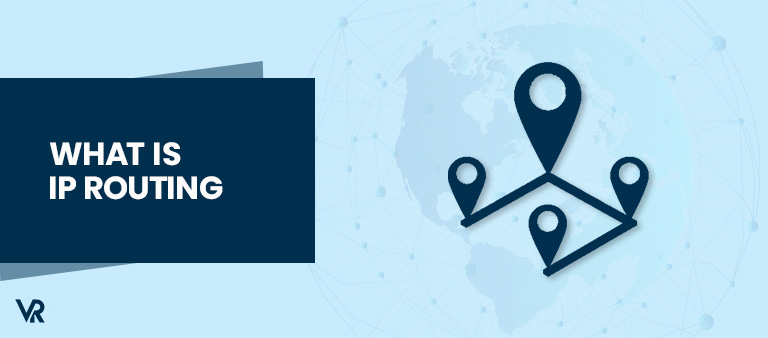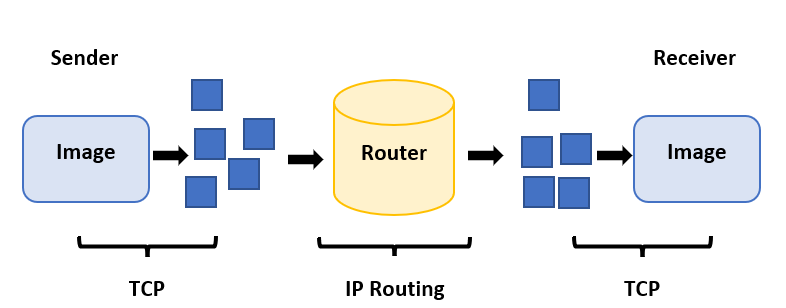
Information travels through different types of networks such as the telephone, the internet, and others by following different paths. This is called network routing. IP routing in New Zealand focuses on the process of selecting routes/ paths of data packets across different networks on the internet.
Data packets travel through a series of routers across different networks till they reach their destination by using a routing algorithm. The algorithm takes into account various factors such as the size of the data packet, destination, and header to determine the path.
In this blog, we will focus on Internet Protocol routing, types, and different routing protocols used on the internet to move data packets on a network.
What is IP Routing in New Zealand?
IP Routing is a process that sends data packets from the sender on a network to a receiver on a different network. It’s the process that helps identify the best route possible by examining the IP address of the destination. It determines the next-hop address to which the data will be delivered and uses routing tables to find the route.
In the process, data is routed from the source server to the destination server using routers across different networks. Routing protocols create routing tables that are used by routers to transfer packets to their destination.
How IP Routing in New Zealand Works– Understanding TCP/IP?

TCP/ IP is an Internet Protocol Suite that is used to send and receive data on the internet. An internet protocol is a set of rules and commands that computers on a network use to communicate with one another. The communication is found at Internet Protocol (IP) and Transmission Control Protocol (TCP).
During the transmission process, TCP breaks down data into small packets while defining the network connection. IP, on the other hand, deals with delivering packets from one computer to another router. This process is known as internet protocol routing.
Upon reaching their destination, TCP reassembles data packets to their original form, similar to IP encapsulation.
Types of IP Routing in New Zealand?
Routing chooses the most optimal transmission path for data from one device on a network to another device or a server in New Zealand. There are three types of routing:
1. Static Routing
In static routing, we have to manually add the routes to the routing table. This type does increase security as only the administrator has access to the network in New Zealand. Similarly, there is no bandwidth used between routers which results in zero routing overhead for the CPU of the router.
However, it can become quite hectic for administrators of a large network to manually determine routes on each router. Only an administrator who knows the topology well can manually add routes to the table.
2. Default Routing
Default routing is the process where the router is configured to send data packets towards a router (hop). It does not matter which network the data packet is on as it is sent to the router, which has default routing. It is mostly used in stub routers – a router that only has one route to all networks.
3. Dynamic Routing
Dynamic routing is more automated as it can make adjustments automatically to the routes according to the data in the routing table. This type of routing uses multiple protocols to identify destinations and different routes to reach them. Just like dynamic IP addresses, it changes frequently.
Some examples of dynamic routing include OSPF and RIP. What’s best about this type of routing is that if one route goes done, it will automatically make adjustments in the route. That is why it is best for selecting the most effective route on a network and is easy to configure as well.
If we talk about disadvantages, it does consume a lot more bandwidth as compared to other types of routing for communicating with different routers. It is also less secure as compared to static routing, where manual input takes place.
What are the Main Types of Routing Protocols in New Zealand?
There are different types of protocols used for routing. A routing protocol is used to identify network paths for data packets. Following are some of the most commonly used protocols used for routing.
IP
The Internet Protocol (IP) is used to specify the origin and destination of each data packet. Routers check the IP of data packets to identify their networking path and where to send them.
OSPF
OSPF or Open Shortest Path First protocol is used by routers to identify the shortest and fastest routes available for sending data packets to their final destination.
RIP
RIP or Router Information Protocol utilizes hop count to identify the shortest path for a data packet between different networks. Hop count tells the total number of routers a data packet will pass through to reach its destination. When a data packet moves from one network to another, it is known as hop.
EIGRP
EIGRP or Enhanced Interior Gateway Routing Protocol is considered a more efficient and newer routing protocol. It’s an enhanced vector protocol that keeps a detailed copy of routing tables of neighboring routers. This way, if it cannot find a destination of a data packet, it can access tables of other routers until a route is found.
IS-IS
IS-IS (Intermediate System – Intermediate System) protocol is used to spread routing information through a single autonomous system in a network. Like EIGRP, this protocol exchanges information with other routers on AS so every router has a complete picture of the system to find an easy route to the destination of the data packet.
BGP
BGP or Border Gateway Protocol is used to identify which networks control which IP addresses and which networks are connected to each other. It is a dynamic routing protocol, and networks that make BGP announcements are known as autonomous systems. Autonomous systems (AS) are a system of networks that make up the internet.
Advantages of IP Routing in New Zealand
Routing is a process that makes sure data packets are routed from an appropriate route from source to its destination. Some of the basic advantages of routing include in New Zealand:
- Stability
- Robust network
- Updated dynamic routing of the network paths
- It keeps the information safe while transmitting
FAQs
Do I need IP routing enabled in New Zealand?
If you are using Windows OS, you may need to have IP routing enabled in New Zealand to set up static routing tables using ROUTE.EXE. It is the process that allows your data to move over multiple computers on a network rather than one device only. However, keep in mind that in Windows, routing is disabled by default.
What is no IP routing?
No IP routing is a command that disables routing on a router and acts as an IP end host for IP packets transfer. You can also enable routing on your device through simple commands.
What does IP forwarding do?
IP forwarding is a process that is used to determine which path a data packet can be sent. It is also known as internet routing, and the process uses routing information to make decisions about the data paths over different networks. These networks are separated from each other.
Summary
IP routing in New Zealand is the process of determining the transmission path of a data packet. It helps data navigate from one computer to another on a network. Routing makes sure transmitted data reaches its destination in the quickest and most efficient way possible in New Zealand. In this blog, we have explained different types of routing and routing protocols used for transmission. If you have any questions, let us know in the comments below.
